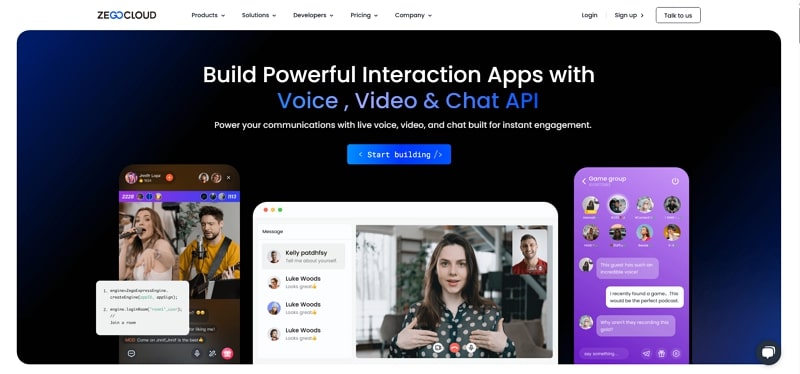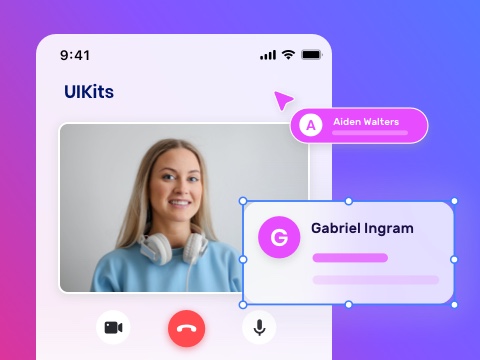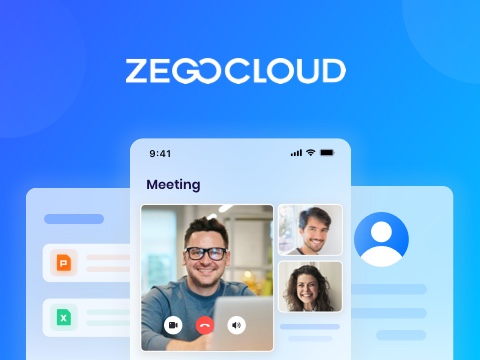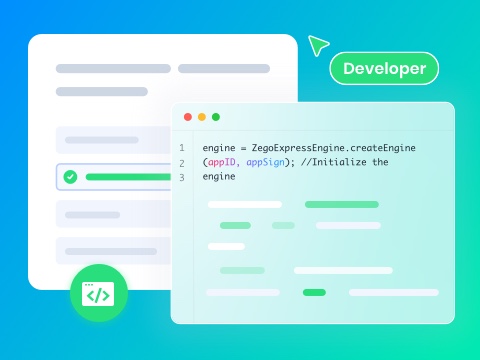In today’s age, shopping has become more social than ever before, as people are buying directly through social media platforms. This growing trend of shopping through Facebook or Instagram is often labeled social commerce, but exactly what is social commerce? In this guide, you will learn what it is, how it works, and its best examples. Moreover, you will get insights about various types and its comparison with e-commerce.
What is Social Commerce?
A way of buying and selling products through social media instead of visiting online stores is called social media commerce. Platforms like Facebook have allowed businesses to showcase their products and complete sales within the app. To add convenience, it lets people purchase items without leaving their favorite apps. People can see product recommendations from their friends, and the AIs also suggest relevant products based on their activity.
Besides, this seamless integration has made shopping a lot more convenient and interactive. By combining it with online shopping, the social commerce industry has eased the hunt for quality products. It is especially popular among young shoppers who prefer quick purchases that do not require any hassle.
How Does Social Commerce Work?
Though social media platforms were mainly for interactions and fun, social commerce has given them a new turn. Here is a breakdown of how it works by utilizing the features of platforms to facilitate buying and selling.
1. Discovering the Product
At the first level, users come across the product through stories or posts. Similarly, brands and sellers create their profiles and pages on social media platforms and post what they are selling. Then, they may hire influencers to give a face and promote their products.
Besides, friends may share an interesting item with you, and you get acquainted with it. This kind of natural interaction increases the chance of purchasing a product.
2. Engagement with the Seller
As you come across a product you like, you will try to contact the seller. The engagement is quite easy, as you can directly text them on their profiles and pages. Additionally, these profiles have automated messages that readily answer your FAQs.
Usually, clients ask questions about whether a product is available and its prices. Likewise, live shopping sessions on a social commerce platform allow sellers to present their products.
3. Checkout
This is the easiest step and has played a key role in the success of social commerce. It lets the clients purchase a product without leaving the app. Many social media platforms offer in-app checkouts, where users can easily enter payment details and receive order confirmations. In addition, buyers can track their orders and leave their reviews about the product after trying it.
Social Commerce vs E-Commerce
To define social e-commerce more accurately, let us compare it with traditional e-commerce in a comprehensive table:
| Features | Social Commerce | E-Commerce |
|---|---|---|
| Platform | It operates directly within popular social media platforms like Facebook and Instagram. Users can interact and purchase within the app. | E-commerce requires dedicated websites or other online marketplaces. Besides, customers need to have an intent to buy and need to visit those specific platforms. |
| User Engagement | As a part of social media content, it gets higher user engagement through likes and comments. Additionally, direct messaging and real-time interactions build community and trust among the clients. | Here, engagement is limited to features like product reviews and ratings. The interaction between the seller and the customer is often minimal as compared to social commerce. |
| Product Discovery | Users have a greater chance of discovering the product naturally through posts. Furthermore, their favorite influencers may be promoting a product for a seller or brand. | Customers need to visit a specific website to buy the product they want. In other words, product discovery is more intentional, and clients need to properly search for it. |
| Checkout Process | With an easy in-app process, customers can provide order and delivery information. In addition, they can track their order and review the product online. | It requires the clients to fill out multiple steps, including adding to the cart. This process feels exhausting, and the customers may leave the process halfway. |
| Marketing Approach | Here, trending and effective social media marketing is used to promote the product. Sharing between users and collaborations with influencers are common social commerce examples. | With the help of traditional digital marketing like SEO and paid advertisements, they promote their products. Also, these marketing campaigns are controlled and can be costly. |
| Customer Interaction | A customer can directly interact with the help of direct messages to clear their confusion about a product. Likewise, the comment section is a great source for community building and immediate feedback. | The clients can only contact the sellers via email or chat support. This provides fewer opportunities for real-time engagement, as this interaction is limited to customer service inquiries. |
| Content Format | This sells its products by presenting them in interactive visuals like videos and live streams. In this way, the clients easily consume their product and clear their confusion regarding product details. | You will see status images or detailed product descriptions to define a product clearly. Though this is informative, it may not bring much engagement. |
Types of Social Commerce
There are various types of social commerce industries and a few common ones are discussed below:
- Shop Now Links: A brand or a seller will share a product in their posts that contain a Shop Now link. Likewise, there could be links with the call to action about checking out the product, which attracts the audience.
- Engaging Videos: Platforms like Instagram and TikTok have videos as one of the most common forms of content on them. This type of media can highlight product features and present them in a more relatable way.
- Influencers: Collaborating with people who are popular on these platforms is a good social commerce definition. Moreover, an influencer appeals to a broader audience and creates a sense of trust among them.
- Affiliate Marketing: It is a growing strategy where a seller uses third parties for the promotion of their products. In return, these businesses or brands pay these third parties on a commission basis.
- Crowdsourcing: This scenario is also known as crowdfunding, and the customers themselves promote a product. Besides, brands use voting and hashtags to encourage clients to answer hot queries and spread their brand.
Examples of Social Commerce
Various social commerce examples exist in this era that allow starters to take inspiration while following their strategy. Hence, if you want to know about them, this section has covered a few top-notch examples for you.
1. JUNO & Co.
It is a beauty brand that uses social media commerce to show how its innovative skincare products work. With 217.6K followers on TikTok, Juno and Co. have achieved great results with this marketing. Most of their videos are how-tos and giveaway videos, which is an effective way of presenting a product. They also have an Instagram presence, where they post aesthetic and funny videos.
2. Milk Bar
They started as a small bakery back in 2008 and have now grown into a great brand. Milk Bar came into the social commerce industry by using Instagram for promotion. With the help of live videos and tutorials, they presented themselves in front of the audience. In addition, they have 243.5K followers on their TikTok profile, with each video getting thousands of views.
3. Cluse
A fashion brand whose Instagram feed is full of user-generated content that adds a personal touch to their products. Moreover, they rely on polls and interactive posts that turn their followers into customers. They have elegantly presented their products, which is a great example to define social e-commerce. They also have a special page for ambassadors on their website where people can get listed by using the brand’s hashtags.
4. Sephora
Apart from the product, Sephora adds a personal and emotional touch by offering personalized quizzes. With quizzes, they not only attract the audience but also recommend products that fit the customer’s needs. In addition, their Instagram feed mixes their products with trending memes circling on the social commerce platform. They also organize different events where they offer special discounts for their customers.
5. ASOS
To survive in the busy and overflowing social commerce industry, ASOS is thriving by focusing on boldness. This fashion brand has an Instagram handle with almost 15 million followers. Additionally, their strategy involves posting reels and user-generated content to entertain followers. They represent different ethnicities in their posts to promote equality and reach a wider audience. Furthermore, they collaborate with influencers who boost their online presence and, eventually, their sales.
Social Commerce Trends for 2025
With the continuous rise of social media commerce in recent years, the following trends are shaping up:
- Chatbots Integration: Brands use chatbots to answer general queries from customers about products. Besides, a survey by Shopify suggested that 41% of customers desired to have a live chat while they were shopping online.
- Micro-Influencer Collabs: In comparison to macro-influencing, the smaller influencer who has a specific niche can be more beneficial. Moreover, these types of influencers will provide more value for your product while charging less.
- Interactive Ads: To reach a broader audience on the social media platform, as they provide great results. With social commerce making shopping easier, the ads will become more effective in turning viewers into potential customers.
- Live Shopping: These events are engaging as well as result-yielding for the sellers. That is why more brands host live sessions to interact with the audience and showcase their products.
- AR: With advancements in the social media industry, augmented reality is gaining more popularity every day. This amazing technology allows customers to try a product virtually before purchasing.
Empowering Social Commerce Experiences With ZEGOCLOUD
As social commerce platform continues to evolve, real-time engagement becomes more important than ever. For brands seeking to enhance their online presence, ZEGOCLOUD provides a comprehensive solution with its powerful APIs. To give the website a decent look, it offers 20+ UIKits that can be easily customized. To host a live shopping event, they can integrate live streaming SDK with an ultra-low latency of less than 300ms.

These API features include virtual gifting for recognizing top customers and recording to save the event for later use. Furthermore, the platform offers video call API to let sellers connect with their clients on 4K video calls. In a single video call, they can add up to 10,000 participants with the screen-sharing feature. Besides, the virtual background feature allows them to add an interactive background during calls.
Additionally, ZEGOCLOUD offers an SDK for conversational AI that lets you utilize an AI anchor assistant feature. This feature creates an exact clone of the seller by copying its style and accent. By storing information about the product, it will accurately introduce the product with its features and benefits. Moreover, it will improve your social media commerce presence by replying to any query quickly, 24/7.
Conclusion
To sum up, social commerce is changing the way people shop online. From live shopping to influencer promotions, it is making the process convenient and interactive for the customers. That is why it is important to use these engaging tactics to keep your online presence.
By utilizing platforms like ZEGOCLOUD, a business can outperform its competitors. Hence, utilize its powerful and ultra-low latency APIs and SDKs to make shopping exciting for buyers and sellers alike.
Read more:
FAQ
Q1: How can I build a live streaming social commerce app?
You can build it using a front-end framework like Flutter or React Native, paired with a backend that supports real-time features. For real-time video and audio interaction, ZEGOCLOUD provides low-latency live streaming SDKs, beauty filters, gift systems, and interactive co-hosting—ideal for shopping events, product demos, and influencer live sales.
Q2: Why use real-time communication in a social commerce app?
Real-time interaction builds trust. When customers can talk to sellers, watch live demos, ask questions instantly, or see others engaging during a stream, it increases credibility and urgency—boosting conversions.
Q3: Can I add real-time chat or video support for buyers and sellers?
Yes. ZEGOCLOUD’s in-app messaging, 1-on-1 voice/video call SDKs, and group chat features allow direct, seamless communication between users—boosting engagement and conversion rates in your commerce app.
Let’s Build APP Together
Start building with real-time video, voice & chat SDK for apps today!










